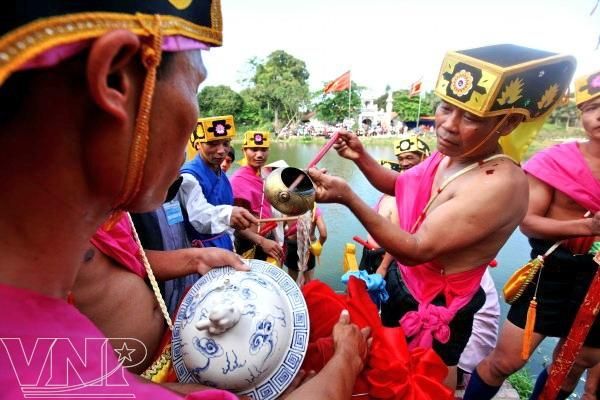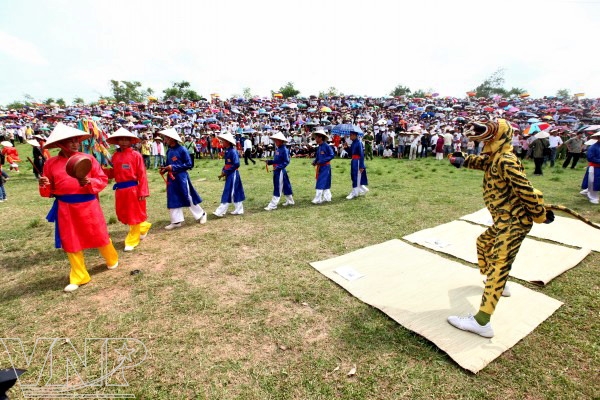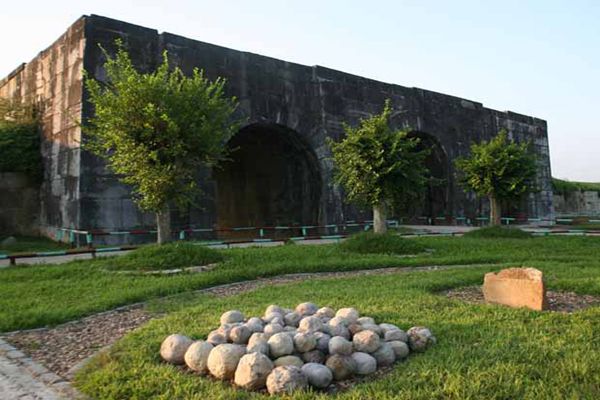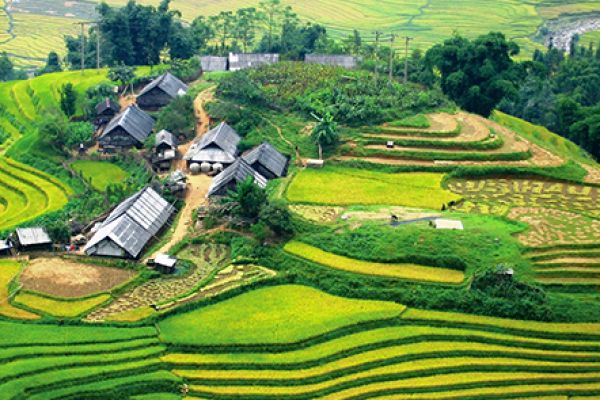Published: 08:43 Monday - July 02, 2012

Saint Giong Festival has existed for thousands of years
 The ceremony of receiving a certificate recognizing the Saint Giong Festival as a World Intangible Cultural Heritage of Humanity.  Thousands of people attend the inauguration of Saint Giong statue on the peak of the Soc Mountain in Hanoi.  Phu Dong villagers prepare for the Saint Giong Festival.  Carrying offerings to the festival.  A procession of water, which starts the Saint Giong Festival, has the meaning of taking water to clean weapons before the battles and pray for good weather and bumper crops.  The St. Giong Festival is organized on the banks of the Red River. |
 The bowl-kicking performance shows the strength of “leveling the mountains and hills” of Saint Giong.  Reenacting a ceremony before the troops go into battle.  Tens of thousands of people watch the villagers’ performance of hunting a tiger to show the strength of Saint Giong’s troops.  The “Drum-signaling man” portraying symbolizing a general of Saint Giong.  A wooden horse takes the place of the iron horse ridden by Saint Giong.  The image of Saint Giong’s troops fighting bravely to defeat the invaders.  The image of an enemy general surrendering with a white flag in his hand.  The “Gong-signaling man”, a general, beats the gong to order the triumphal troops to retreat.  Troops deliver the Saint’s gifts to festival visitors.  A feast for the troops to celebrate their victory.  Saint Giong Festival is considered a “dramatic folk stage” because tens of thousands of local people take part. |
On April 6, the villagers carried out the ceremony of taking water, which started the festival to clean weapons before the battle and pray for good weather and bumper crops.
At 10am on April 7, a procession of trays of vegetarian food, including rice and salted egg-plant, was held to recreate the tale of the villagers who contributed food to Saint Giong.
The main festival day was on April 9 with a performance called “Phu gia” of Saint Giong’s troops. The troops consist of 120 men about 18-36 years old. They were divided into 6 armies marching back and forth in step, showing the image of a disciplined and warlike army.
At 11am, the Ai Lao troupe performed the hunting of tiger in front of Phu Dong Temple. Before starting the game, about 20 participants performed beautiful and flexible dances to the drumbeat and sound of gongs and then carried out a worshipping ceremony. The game was over when the tiger was captured. Then, many other interesting games and tales of fighting of Saint Giong’s troops were reenacted until the afternoon. After the victory, a feast was given to the troops. During the evening, cultural activities were held such as a fireworks display, a Tuong performance and folk games to celebrate the victory. The festival lasted until April 12.
Through tales with the image of Saint Giong’s troops defeating the En invaders, the image of soldiers saying goodbye to their mother before going to battle, the image of a victorious army returning to the homeland and the image of surrendering invaders, the Saint Giong Festival helped viewers learn about legends related to Saint Thanh Giong. It is not only a religious, folk and cultural activity but also a “great drama” depicting a great moment in history, culture, religion and art. It is also a profound philosophy of the struggle for life and preserving the nation as well as showing the moral standards of humans in war or peace.
For the above reasons, the Saint Giong Festival is immortal and is worthy to be honoured. At 6pm (10:20 pm in Vietnam) on November 16, 2011 in Nairobi, Kenya, the Saint Giong festival in Phu Dong Temple and Soc Temple in Hanoi was officially recognized as a world intangible cultural heritage of humanity by UNESCO.
Source: VNP










(84-63) 3 826042 – (84-63) 3 511142
No 54 Nguyen Dinh Chieu, Ham Tien Central Mui Ne Beach Binh Thuan Vietnam
523 To Hien Thanh District 10 Ho Chi Minh City Vietnam
Ha Long Halong City Quang Ninh Vietnam
A13 Hung Thong 2 Halong City Quang Ninh Vietnam




